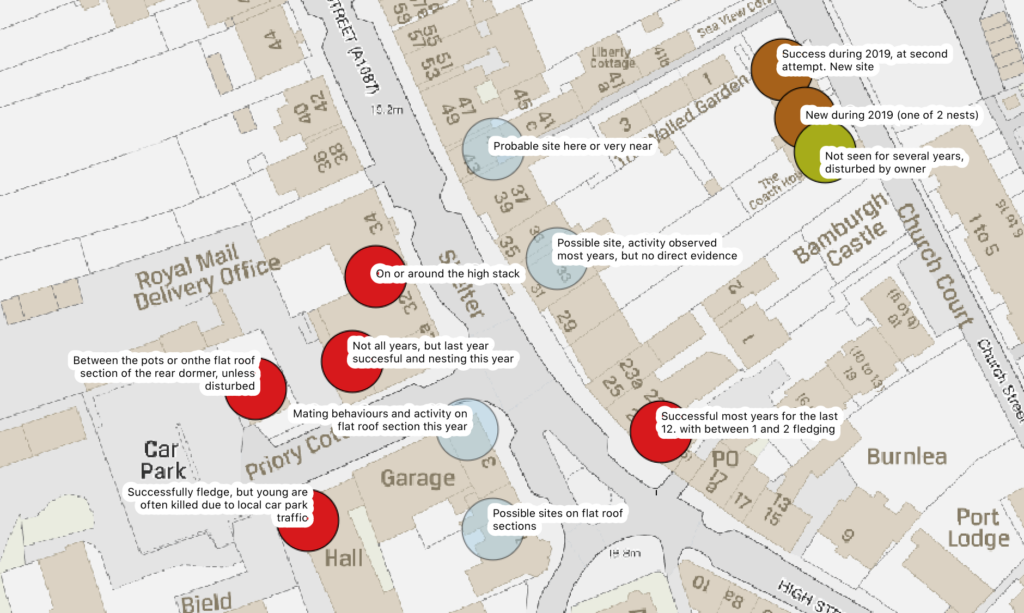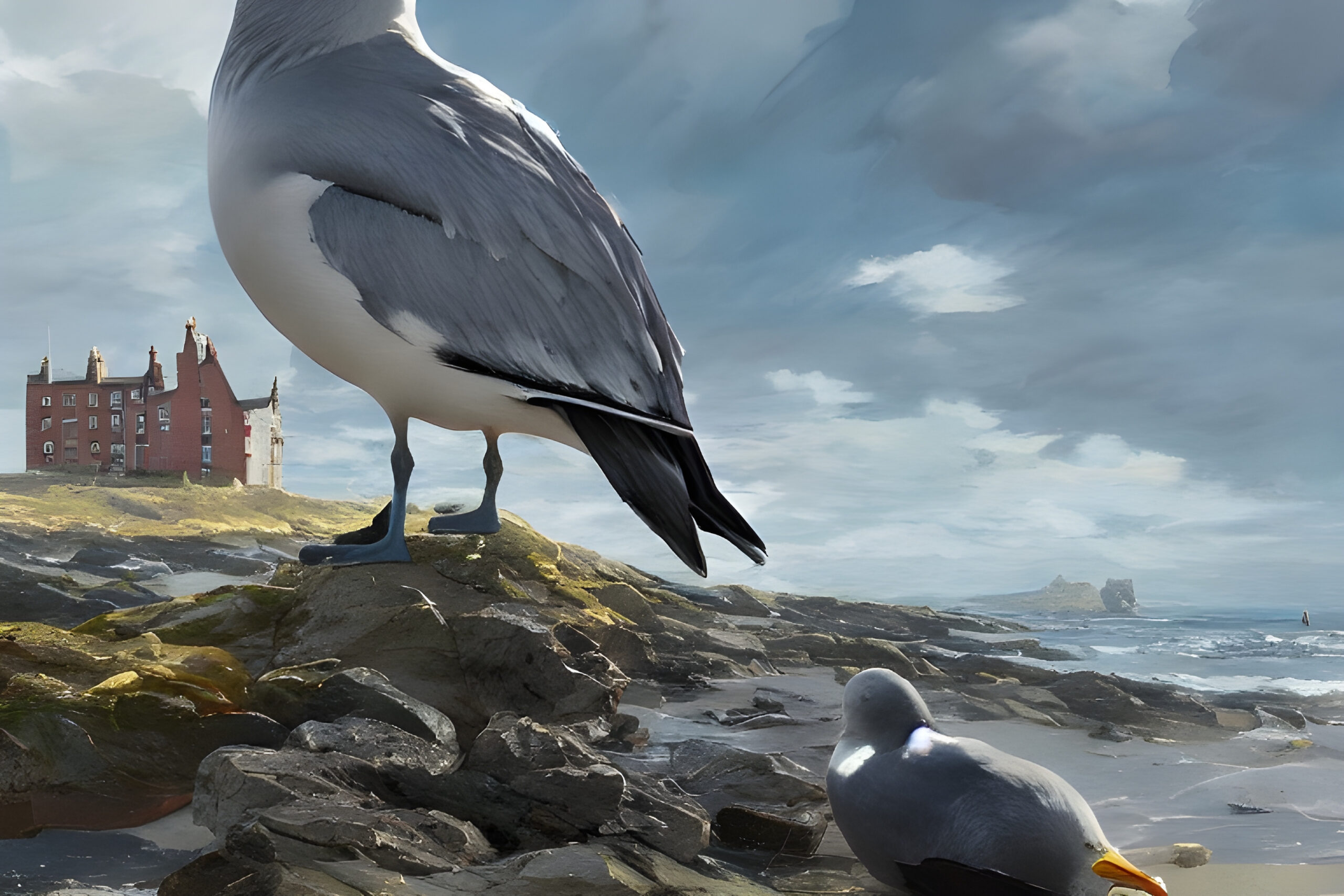Casual observations suggest that the numbers of successfully breeding gulls seems be increasing, over the last few years, and since the regular egg treatment cycle has not been repeated for 2 years so has the number of sites. Here is an assessment of where we think the local ones are nesting.

The red indicates active nest sites in the last 2 years. The pale transparent blue represent possible nest sites (mating and speculative nesting behaviours). The browns represent new sites, not present in earlier years (or perhaps not used consistently.)
1. What is the estimated nesting gull population, breeding pairs / nests, by species and locality in East Lothian in each of the last 5 seasons that it has been recorded?
2. How many gull nests were treated, by species and locality in each year?
3. What was the reach of those treatments (e.g. 60% of known nests)? Reasons for non and missed treatments.
4. What was the effectiveness of the treatments?
5. The number of reports of nuisance, broken down by nature of the damage or threat, e.g. to property and to humans.
6. The costs of treatments and manpower.
7. The additional costs (indicating staff time) if possible of handling call outs (the number) and gull removals (number) or supplementary measures (number) by locality in each year.
I understand this is a long list of questions, and that at this time your resources are stretched. Where the information might not be available without entailing excessive costs or time, a simple narrative answer and estimates would be acceptable.
I’d be interested in helping out with any local publicity to help manage gull problems, but my interest is in understanding their ecology better and perhaps seeing if it were possible to establish and get funding for a local citizen science project (there is a local seabird centre that would be a great partner).
